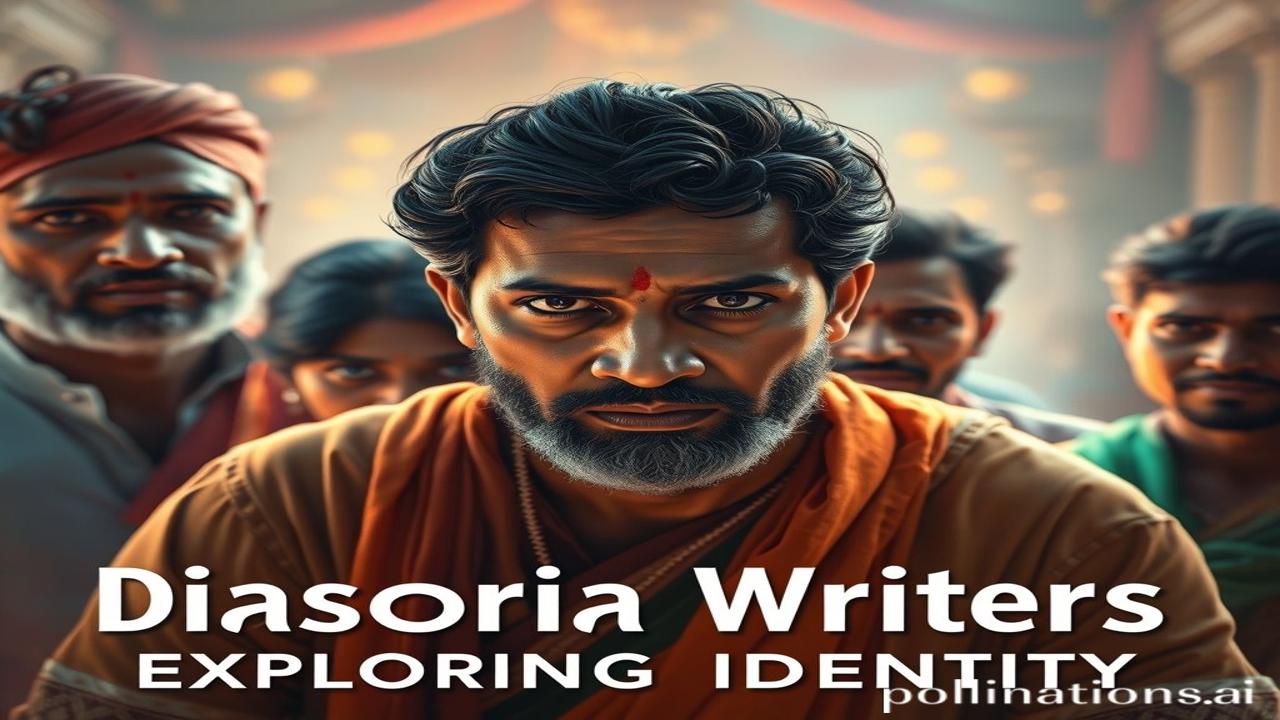Diaspora Writers Exploring Indian Identity: Khoi Hui Jadon Ki Talaash
Kabhi socha hai, door desh mein baithe logon ke dil mein Hindustan kaise dhadakta hai? Kya unki yaadon mein wahi Ganga ki pavitra dhara behti hai, ya waqt ke saath kuch aur rang chadhte hain? Imagine a heart, beating thousands of miles away, still echoing with the sounds of temple bells and the aroma of maa’s haldi-doodh. This is the story of diaspora writers, those who left India but could never leave its essence behind.
The Seeds of Separation: Historical & Cultural Context
What is the Indian Diaspora? Simply put, it refers to the large group of people who have migrated from India to other parts of the world. This movement, this pravasi, wasn’t a single event. It started centuries ago, with traders traversing across oceans, and escalated during the colonial era with indentured labourers being shipped off to far-flung lands like Mauritius, Fiji, and the Caribbean. Then came the brain drain of the post-independence era, with skilled professionals seeking better opportunities in the West.
Why is this important? Because each wave of migration carried a piece of India with it. They carried their languages, their rituals, their food, and their stories. But the mitti ki khushboo gets mixed with foreign air, and that’s where the complexity begins. These writers, belonging to the Indian Diaspora, become the storytellers of this complex identity, grappling with questions of belonging, alienation, and the ever-evolving definition of “Indianness.” Think of names like Jhumpa Lahiri, Salman Rushdie, V.S. Naipaul (though his relationship with India was… complicated), and Monica Ali. Their pens became mirrors reflecting the fractured and multifaceted reality of being Indian away from India.
Zameeni Sach – Log Aur Jeevan: Ek Safar, Do Manzil
Imagine a young girl, Priya, growing up in London. Her parents, doctors who migrated in the 70s, try to recreate India within their four walls. The house is filled with the sounds of Lata Mangeshkar, the smell of garam masala, and the vibrant colours of saris. Yet, outside, Priya navigates a different world, a world of fish and chips, British accents, and cultural norms she struggles to fully grasp.
One day, Priya asks her grandmother, visiting from India, “Dadi, main Indian hoon ya British?”
Dadi smiles, her eyes crinkling. “Beta, tum Ganga aur Thames dono ho. Tumhare andar Bharat ki shakti bhi hai, aur duniya ko badalne ki kala bhi.”
This dialogue, imagined or real, encapsulates the central dilemma faced by many in the diaspora. They are neither fully “here” nor fully “there.” They are constantly negotiating their identity, often feeling caught between two worlds, two languages, two sets of expectations. And this is what fuels their writing, this constant search for a place to call home.
Dharohar Aur Pehchan: The Echoes of Today
Today, the diaspora is more connected than ever. The internet allows for instant communication, access to Indian news, music, and culture. But the fundamental questions remain: What does it mean to be Indian in the 21st century, when your primary experiences are shaped by a different culture?
We see this echoed in contemporary art, films, and literature. The younger generation of diaspora writers is exploring new themes: the intersection of caste and race, the challenges of arranged marriage in a globalized world, the complexities of sexuality and gender within a South Asian context. They are pushing the boundaries of what it means to be Indian, constantly redefining Bharatiyata for a new generation.
Mazedar Tathya Ya Bhram-Bhanjak: Beyond the Stereotypes
Log samajhte hain ki diaspora writers sirf “Indian problems” ke baare mein likhte hain. Lekin asli sach yeh hai ki they are engaging with universal themes of love, loss, identity, and belonging, through the lens of their unique cultural experience. They offer fresh perspectives on global issues and challenge simplistic narratives about race, ethnicity, and culture.
Drishya Aur Bhavnayein: Smells of Saffron and Sound of Silence
Imagine the sensory overload of visiting India after years of living abroad. The air hangs thick with the scent of jasmine and spices. The streets are a cacophony of sounds – the honking of cars, the chanting of prayers, the laughter of children. The vibrant colours of saris and turbans assault the eyes. It’s a homecoming, but also a reminder of how much you’ve changed, and how much India has changed.
The temple walls feel cool to the touch, etched with stories of gods and goddesses. The taste of maa ke haath ka khana is both familiar and strangely foreign. This sensory experience, this rush of memories and emotions, is what fuels the diaspora writer’s imagination.
Antim Vichar Ya Uddharan: A Bridge Between Worlds
Ultimately, diaspora writers are bridges between worlds. They are translators of cultures, interpreters of experiences, and chroniclers of the human condition. They remind us that identity is not fixed or monolithic, but fluid and ever-evolving. As the great poet Rabindranath Tagore said, “Where the mind is without fear and the head is held high… Into that heaven of freedom, my Father, let my country awake.” And perhaps, that country resides not just within geographical borders, but also in the hearts of those who carry its spirit with them, wherever they may roam.
